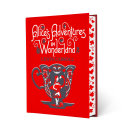Sylvie and Bruno
નવે 2022 · DigiCat
ઇ-પુસ્તક
160
પેજ
family_home
પાત્ર
info
reportરેટિંગ અને રિવ્યૂ ચકાસેલા નથી વધુ જાણો
આ ઇ-પુસ્તક વિશે
In "Sylvie and Bruno," Lewis Carroll weaves a fantastical narrative that intertwines the whimsical and the philosophical. This novel presents a dual storyline: one follows the fairy-tale adventures of Sylvie and Bruno in a magical parallel world, while the other delves into the complex lives of characters in Victorian society. Carroll employs his characteristic playful and nonsensical literary style, laden with playful language and imaginative dialogues that invite readers to engage with deeper philosophical themes, including love, morality, and the nature of reality. Set against the backdrop of the late 19th century, the book reflects Carroll's keen interest in the intersection of childhood innocence and adult disillusionment, encapsulating a moment when the boundaries of literary genres were still fluid. Lewis Carroll, the pen name of Charles Lutwidge Dodgson, was a mathematician, logician, and writer, renowned for his pioneering contributions to children's literature. His experiences as a lecturer in mathematics at Oxford, combined with his fascination for storytelling, inspired him to create enchanting worlds filled with both whimsy and rigorous thought. This unique blend of disciplines allowed him to craft narratives that resonate with both young readers and adults, making his works timeless. "Sylvie and Bruno" is highly recommended for those who appreciate literature that challenges conventional narratives while still embracing pure joy and playfulness. It offers a tapestry of imaginative experiences, providing insights into the complexities of human nature through the lens of childlike wonder. A journey through Carroll's intricately constructed worlds is sure to stimulate both the heart and intellect of its readers.
લેખક વિશે
Lewis Carroll, born Charles Lutwidge Dodgson on January 27, 1832, was an English writer renowned for his works in the genre of literary nonsense. A man of diverse talents, Carroll was also a mathematician, logician, Anglican deacon, and photographer. He hailed from Daresbury, Cheshire, England, and was educated at Christ Church, Oxford. Carroll is best celebrated for his timeless children's novels, the most notable being 'Alice's Adventures in Wonderland' (1865) and its sequel 'Through the Looking-Glass' (1871). His fascination with fantastical themes and inventive word play has captivated readers for generations. However, one of his lesser-discussed novels, 'Sylvie and Bruno', published in two volumes during 1889 and 1893 respectively, marks his later foray into the symbolic and philosophical. This later work diverged from his earlier storytelling style, combining fairy tale elements with poignant social commentary and an experimental narrative structure. Carroll's linguistic playfulness and exploration of logic have had a profound impact on both his contemporary literary circles and modernist writers who followed. His ability to bridge the gap between child and adult literature, infusing intellectual depth within whimsical narratives, makes him a pivotal figure in the Victorian era's literary landscape. Despite a penchant for the whimsical and bizarre, Carroll's writings carry undertones of melancholy and subtle social critique, characteristics that have fueled myriad interpretations and solidified his position as a stalwart of literary scholarship.
આ ઇ-પુસ્તકને રેટિંગ આપો
તમે શું વિચારો છો અમને જણાવો.
માહિતી વાંચવી
સ્માર્ટફોન અને ટૅબ્લેટ
Android અને iPad/iPhone માટે Google Play Books ઍપ ઇન્સ્ટૉલ કરો. તે તમારા એકાઉન્ટ સાથે ઑટોમૅટિક રીતે સિંક થાય છે અને તમને જ્યાં પણ હો ત્યાં તમને ઑનલાઇન અથવા ઑફલાઇન વાંચવાની મંજૂરી આપે છે.
લૅપટૉપ અને કમ્પ્યુટર
Google Play પર ખરીદેલ ઑડિઓબુકને તમે તમારા કમ્પ્યુટરના વેબ બ્રાઉઝરનો ઉપયોગ કરીને સાંભળી શકો છો.
eReaders અને અન્ય ડિવાઇસ
Kobo ઇ-રીડર જેવા ઇ-ઇંક ડિવાઇસ પર વાંચવા માટે, તમારે ફાઇલને ડાઉનલોડ કરીને તમારા ડિવાઇસ પર ટ્રાન્સફર કરવાની જરૂર પડશે. સપોર્ટેડ ઇ-રીડર પર ફાઇલો ટ્રાન્સ્ફર કરવા માટે સહાયતા કેન્દ્રની વિગતવાર સૂચનાઓ અનુસરો.








